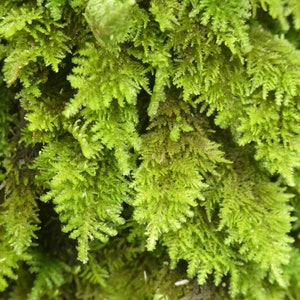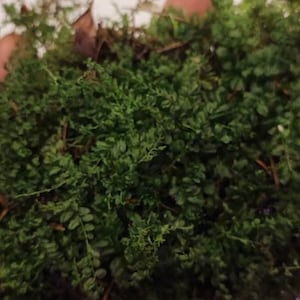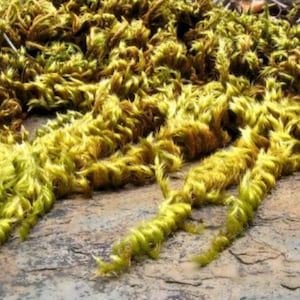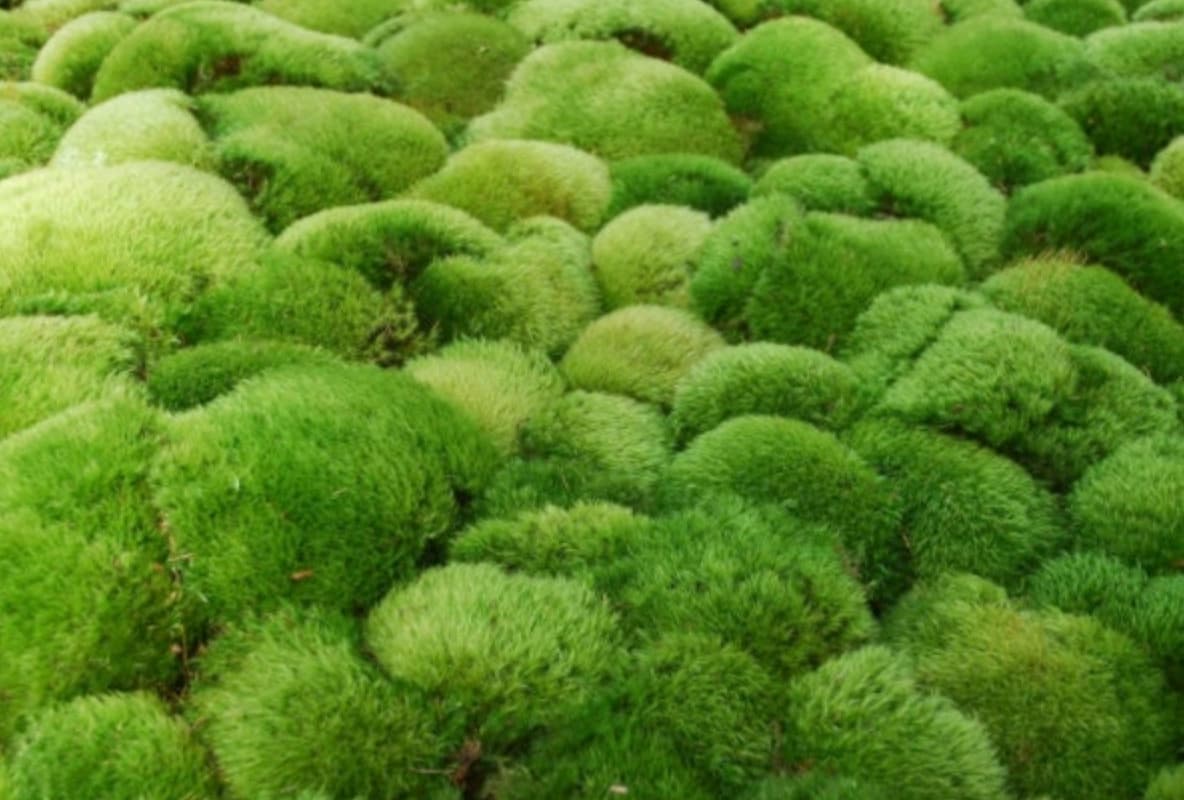
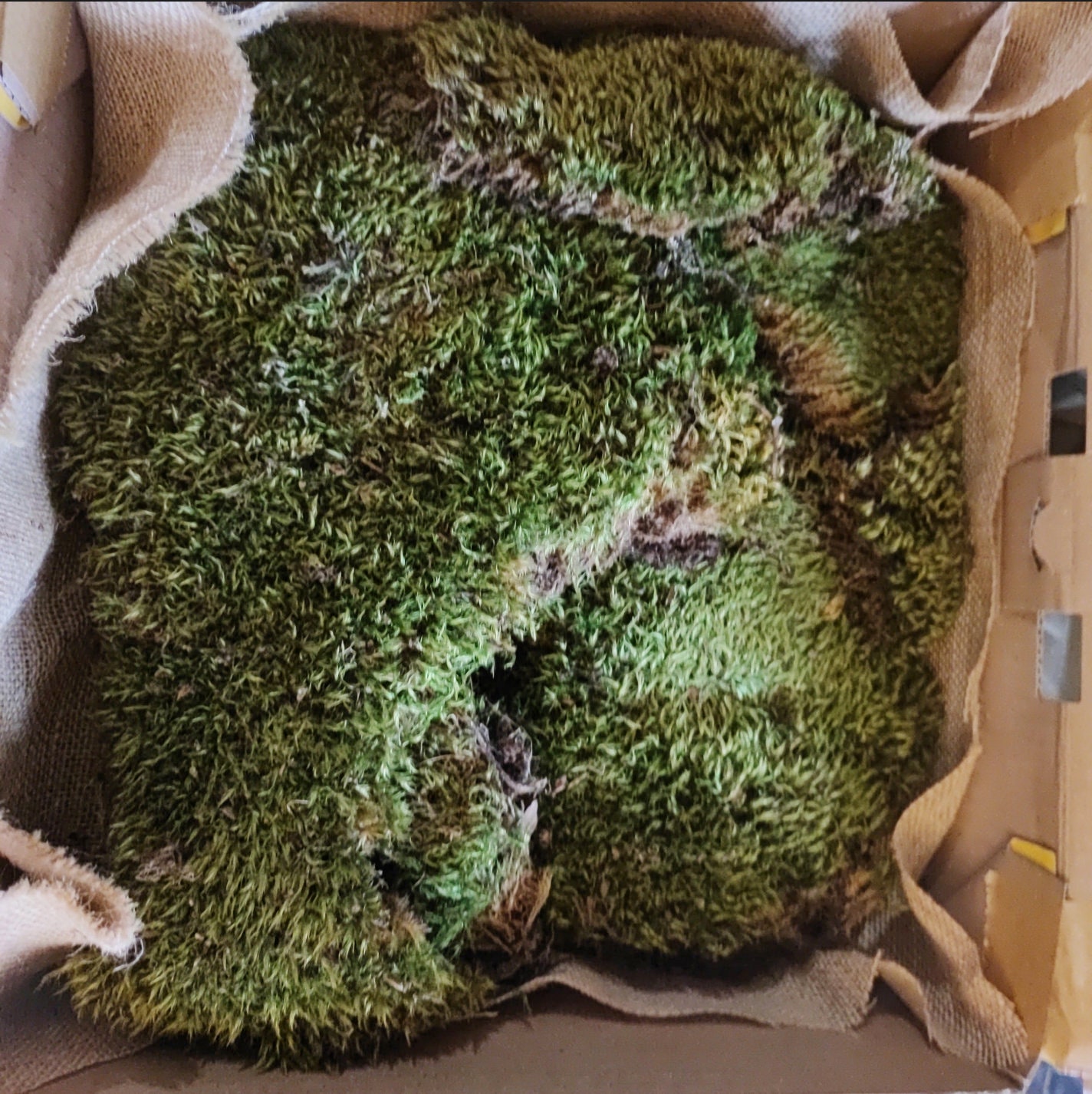
moss
Mood moss, Dicranum s. Terrarium moss
$4.75
-
DetailsDicranum Scoparium AkA 'Mood moss' or broom-fork moss is a classic moss to use in any terrarium, mossarium, or moss scape. A full shade, high humidity moss that grows on rotting wood, or our forest compost pellets or potting soil and worm casts. A great moss to use in any terrarium, easy to grow, and a beginner's favorite.
Cushion of broom-fork moss, forms a thick tall cushion of light green star-like or firework formation plants. An easy-to-grow and propagate moss that will quickly take over a stump making amazing formations in your moss garden. Mosses can remain alive even during periods of drought, resuming photosynthesis when moistened again by rain or even fog. Spray generously the moss when it looks dry and let it have some sun, no need for full sun which makes them great indoor plants too.
We are an official plant nursery based in France, all our plants and bryophytes have plant passports with our official agricultural B number 0340088V, when being sent to all EU countries, countries outside the EU will be sent with a Phyto certificate, this process will take a little longer to process the orders as the Phyto certificate can take 1 week to receive the certification.
We offer free shipping to France and EU countries from 100 euros of items bought with coupon FREESHIPPING100
For more information please contact us.
We sell Dicranum Scoparium as a grown moss in many dimensions.
we also sell the correct "Growing Substrate" for Dicranum Scoparium in different quantities to help you give your moss the best environment.
We do Internation post tracking with every order. Your order will be packed safely and I'll send your Internation tracking number so you can follow your order travels to you :)
You will be able to build a nice moss garden on your rocks, clay plate or wood, bricks etc.
Mix it up and have fun!! damp wood, and a broken clay flower-pot with some pretty stones and a flower or plant and voila! a real piece of living art.
Do have a look at my other moss and liverwort species for sale and buy a selection, for your table art, moss garden Terrariums (allow the moss time to set and absorb water before you let your pet play with it, allow up to 1 month for moss to set.)
Broom fork moss is usually robust and coarse, forming shiny tufts with woolly stems 2–8 cm high. The leaf midrib extends to the tip and usually has 4 ridges along its back. The leaves are 3.5–8 mm long, lance-shaped with a long, slender point, and strongly toothed along the upper third. Most leaves will be folded and curved to one side, but may be wavy. Capsules are 2.3–5 mm long, urn-shaped and curved. The capsules are held on mostly-erect stalks 18–35 mm long. The operculum (capsule lid) is usually longer than the capsule.
As a bryophyte, Dicranum scoparium has pluricellular rhiziods (root structure) which help with water absorption and anchor the plant to the ground.
They evolved about 500 million years ago. Like other land plants, mosses contain green chlorophyll and make their own food through photosynthesis, which involves using the energy of the sun to combine carbon dioxide and water to make sugars.
Mosses are nonvascular plants, which means that they lack a vascular system. Because nonvascular plants lack lignified water-conducting tissues, they can't become as tall as most vascular plants.
The Ecological Roles of Mosses - Mosses play essential roles in the natural world:
Mosses don't need previously developed soil to survive, because they obtain their mineral nutrients from rain or running water.
This means that mosses are sometimes the first to colonize newly exposed areas. They promote soil formation, because (as they grow) dust and humus collects among the stems. When they die, their bodies decompose and add to the developing soil.
Mosses grow where other plants can not, because they can survive without being rooted in soil. They can survive on cliffs, rocks, steep hills, and tree trunks. Mosses colonize the barren rocks and exposed areas of hills, and make them suitable for growing larger vascular plants by depositing humus soil and plant debris. Mosses can remain alive even during periods of drought, resuming photosynthesis when moistened again by rain or even fog.
Mosses play an important role in the global carbon cycle. They absorb carbon dioxide and release oxygen. In areas with cool climates, decomposition is slow because of cold temperatures. This means that large amounts of carbon are sequestered in the Sphagnum of bogs.
Mosses also contribute to the environment by absorbing water from rainfall and runoff, then slowly releasing it to the ground or atmosphere. This reduces stream erosion and fluctuating lake levels.
Mosses also provide habitat on which many species ultimately depend, underpinning entire ecosystems. Mosses provide shelter for other organisms such as small insects. The insects, in turn, provide food for frogs, which in turn provide food for snakes, which in turn provide food for carnivores like bobcats. -
Shipping & Policies
Shipping from France
Processing time
1-3 business days
Customs and import taxes
Buyers are responsible for any customs and import taxes that may apply. I'm not responsible for delays due to customs.
Payment Options
Returns & Exchanges
I gladly accept returns, exchanges, and cancellations
Just contact me within: 14 days of delivery
Ship items back to me within: 30 days of delivery
- Custom or personalized orders
- Perishable products (like food or flowers)
- Digital downloads
- Intimate items (for health/hygiene reasons)
- Items on sale
Conditions of return
Buyers are responsible for return shipping costs. If the item is not returned in its original condition, the buyer is responsible for any loss in value.
Questions about your order?
Please contact me if you have any problems with your order.
